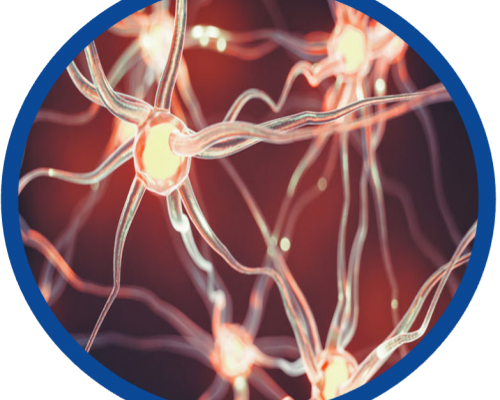The Four Ws of Neuropathic Pain: Who, What, When and Where (Part 1)

For most people with a spinal cord injury (SCI), the inability to walk is often not the largest “SCI worry.” Instead, secondary complications such as bowel/bladder incontinence, fatigue and chronic pain are often stated to cause more trouble. Although all these complications are extremely important, I am here to talk about neuropathic pain.
Research suggests that 75% of people with SCI experience neuropathic pain [1]. However, based on conversations that I have had with many people with SCI, I wonder if this number is even higher? Many people report that they DON’T have neuropathic pain. But, when asked about the odd sensations that are felt below their level of injury, people often discuss common neuropathic pain symptoms. According to the International Spinal Cord Injury Pain Classification Committee [2], neuropathic pain is defined as a disease or lesion of the somatosensory nervous system.
Wait… I’m not sure what that is?
Let’s break this down a little bit further.
The somatosensory nervous system includes hundreds of pain receptors located throughout the body. These pain receptors are specialized, and help the body feel different things (such as a pinprick, or burning hot water in a persons’ lap), in order to help the brain, react and respond. This sensory information is then sent back to the central nervous system to process (which includes the brain and spinal cord). For people without paralysis, the brain reacts and responds appropriately to painful sensations. For example, if somebody touches a hot stove, the brain will receive information about the painful heat, and tell the body to remove the hand from the stovetop.
For people with SCI, there is a disconnect between the information that pain receptors are sending to the brain, and the pain information that the brain is sending back to the rest of the body. This is a short-form explanation of what causes neuropathic pain and shows why it is tough to understand (and treat)!
How neuropathic pain happens.
I’m still wondering why I feel neuropathic pain if I do not have sensation (or my sensation is impaired) below my injury level. Is what I feel neuropathic pain?
Let's break neuropathic pain down into its different parts.
WHO: Approximately 75% of people with SCI experience neuropathic pain.
WHAT: The following are common symptoms of neuropathic pain [3]
- Hyperalgesia, which can be understood as a pain response that is greater than what it should be.
- Allodynia, which can be explained as a person feeling pain when pain should not be felt. For example, brushing a feather on your legs should not cause pain, but it would for someone with allodynia.
- Additional symptoms include: burning, stinging, tingling (electric shocks), deep pain (feels like a bruise), itchy, hot, sharp, intense, cold, dull (e.g., toothache), surface-level pain (e.g., feels like raw, sunburned skin)
WHEN: Although this is not the case for everybody, most research evidence indicates that SCI-neuropathic pain develops within the first year post injury [4]. Scientists are still trying to figure out why some people with SCI develop neuropathic pain, while others do not. Currently, SCI-neuropathic pain is thought to be related to various injury characteristics such as age at injury, and injury completeness.
WHERE: Pain can be AT the level of injury referred to as “at-level neuropathic pain” or BELOW the level of injury referred to as “below-level neuropathic pain”.
Things to Consider about Your Neuropathic Pain before the Next Blog Post
- Now that you may better understand symptoms of SCI-neuropathic pain, has your opinion changed regarding whether or not you experience neuropathic pain?
- Physicians often prescribe pharmaceuticals to reduce neuropathic pain. What are your thoughts on this? Have you found them to be effective, or have you found other ways to self-treat/cope with your neuropathic pain?
- During the day, do you notice a pattern with your neuropathic pain? When does it decrease (or, increase)?
In my next post I am going to:
- Summarize research evidence surrounding SCI-neuropathic pain treatment options
- Outline my research findings
- Describe a few strategies that may help you a) better understand your own neuropathic pain, AND b) help you better communicate your pain experiences with your physician
Always learning,
Kendra Todd is a Ph.D. Candidate at the University of British Columbia.
_______________
References:
1- Burke, D., Lennon, O., & Fullen, B. M. (2018). Quality of life after spinal cord injury: The impact of pain. European Journal of Pain, 22(9), 1662-1672.
2-
3- Galer, B. S., & Jensen, M. P. (1997). Development and preliminary validation of a pain measure specific to neuropathic pain: the Neuropathic Pain Scale. Neurology, 48(2), 332-338.
4- Warner, F. M., Cragg, J. J., Jutzeler, C. R., Finnerup, N. B., Werhagen, L., Weidner, N., ... & Kramer, J. L. (2018). Progression of neuropathic pain after acute spinal cord injury: a meta-analysis and framework for clinical trials. Journal of neurotrauma, 36(9), 1461-1468.
